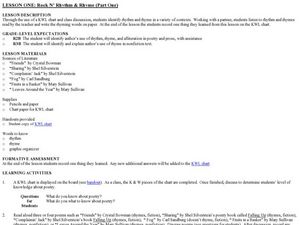Curated OER
Beginning Reading: Word Formation
In this word formation worksheet, students cut out the letters f, g, o, l, t and n. Then they use these letters to form the words fog, log, lot and not.
Curated OER
How Clouds And Fog Are Formed
Young scholars define what a cloud is and what fog is. After a lecture/demo, students participate in an experiment on how clouds and fog are formed. In pairs, they perform the experiment a second time, record their results and present to...
Curated OER
Kinds of Weather and What to Wear
Students explore how temperature and wind contribute to types of weather. In this weather lesson plan, students observe an experiment in which ice, steam, and an electric fan are manipulated to produce results that simulate how fog and...
Curated OER
Weather Art in Space Settlements
Students demonstrate a cloud formation and the relation between pressure and temperature in gases. They explain how clouds could be created in space settlements and see the relation between pressure and temperature in gases.
Curated OER
Open Wide at the Dentist, "Aaaahh"
Study the /o/ in both written and spoken words by reciting a tongue twister and making words using Elkonin letterboxes. Next, write a message about frogs using /o/ words. Finally, listen to a short book talk on "Doc in the Fog" before...
Curated OER
Opera Singers
Students read and spell words. This lesson focuses on the short o sound and formation of the letter. Some words that are used are mop, pot, dog, log, and sock. They write the letter and name pictures with the sound by circling the...
Curated OER
At the Crossroads
Third graders explore where South Africa is and then research details about the country to fully assess the background to the book, "At the Crossroads." They receive a map of Africa and color in the country of South Africa and list five...
Curated OER
Lesson One: Rock N Rhythm & Rhyme (Part One)
Second graders listen to poetry to find rhyme and rhythm. In this poetry activity, 2nd graders listen to different types of poetry and find how they are alike. They look for rhyming words and create their own rhymes.









